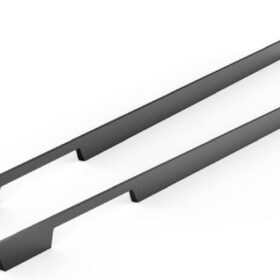Safety Standards and Regulations for Modern Cabinet Handles
Introduction
The safety of household appliances and fixtures is of paramount importance, and cabinet handles are no exception. Over the years, stringent standards and regulations have been developed to ensure that cabinet handles meet specific safety requirements. This essay explores the multifaceted aspects of safety standards and regulations for modern cabinet handles.
Material Composition and Durability
The materials used in cabinet handles must meet specific industry standards to guarantee their strength and durability. For instance, the American National Standards Institute (ANSI) mandates that cabinet handles be constructed from materials capable of withstanding a minimum load of 100 pounds. Additionally, the handles must be resistant to corrosion, splintering, or breakage under regular use conditions.
Ergonomic Design
Safety regulations also focus on the ergonomic design of cabinet handles. Handles should be shaped and sized to comfortably fit the human hand, minimizing strain or discomfort. The ideal handle design allows for a secure grip without causing excessive pressure on the fingers or wrist. Standards like the International Organization for Standardization (ISO) provide guidelines on handle shapes, sizes, and materials to ensure optimum ergonomic comfort.
Edge and Surface Finishing
The edges and surfaces of cabinet handles are subject to stringent safety regulations. Sharp or jagged edges can pose a safety hazard, especially in kitchens or bathrooms where water or slippery surfaces may be present. Regulations require that handles have smooth, rounded edges and a non-slip surface to prevent accidental cuts or lacerations.
Installation and Mounting
Proper installation is crucial for the safe and secure use of cabinet handles. Regulations specify the appropriate mounting methods, screw sizes, and torque values to ensure that handles are securely attached to cabinets. Additionally, safety standards address the safe use of handles in areas where excessive force or impact may be encountered, such as commercial kitchens or heavy-duty workspaces.
Child Safety Considerations
For households with young children, specific safety concerns arise. Cabinet handles should be designed to minimize the risk of accidental opening or entrapment. Regulations may mandate the use of child-resistant locks or latches on cabinets, as well as handles that are difficult for children to grip or manipulate.
Compliance and Testing
Manufacturers of cabinet handles must ensure compliance with safety standards and regulations. Independent testing organizations, such as Underwriters Laboratories (UL), verify that products meet the required specifications. Handles are subjected to rigorous tests to assess their strength, durability, ergonomic design, and installation safety.
Conclusion
Safety standards and regulations for modern cabinet handles are comprehensive and multifaceted, encompassing material composition, ergonomic design, edge finishing, installation practices, child safety, and compliance testing. These regulations play a vital role in ensuring the safe and reliable use of cabinet handles in a variety of residential and commercial settings. By adhering to these standards, manufacturers and consumers can contribute to a safer and more user-friendly environment.
-
2024-11-29Top Trends in Modern Kitchen Cabinet Pulls for 2024
-
2024-11-28The Ultimate Guide to Modern Kitchen Cabinet Pulls- Materials, Styles, and Tips
-
2024-11-27Elevate Your Kitchen Design with These Must-Have Modern Cabinet Pulls
-
2024-11-26Sleek and Stylish- The Best Modern Kitchen Cabinet Pulls for a Contemporary Look










